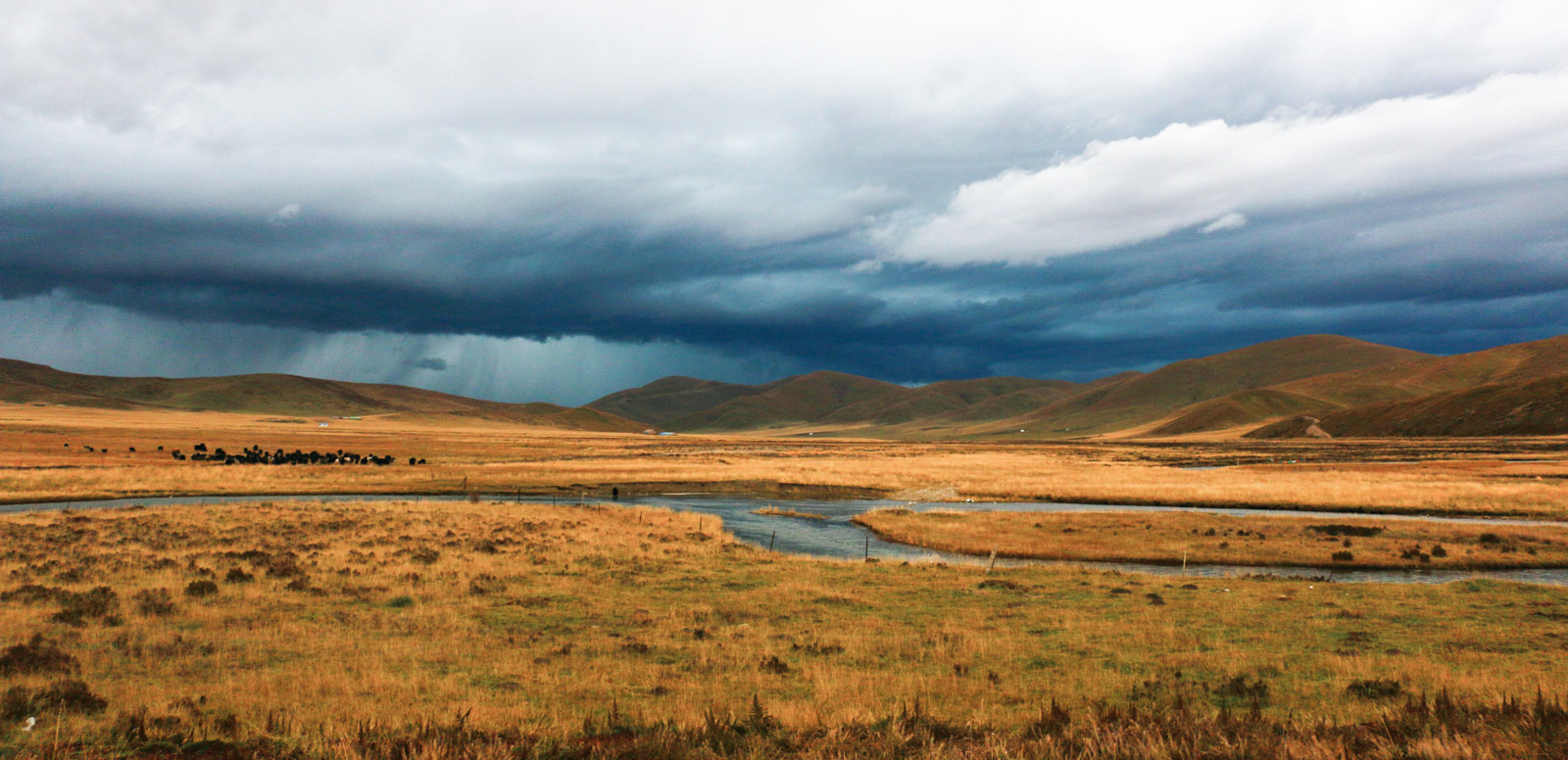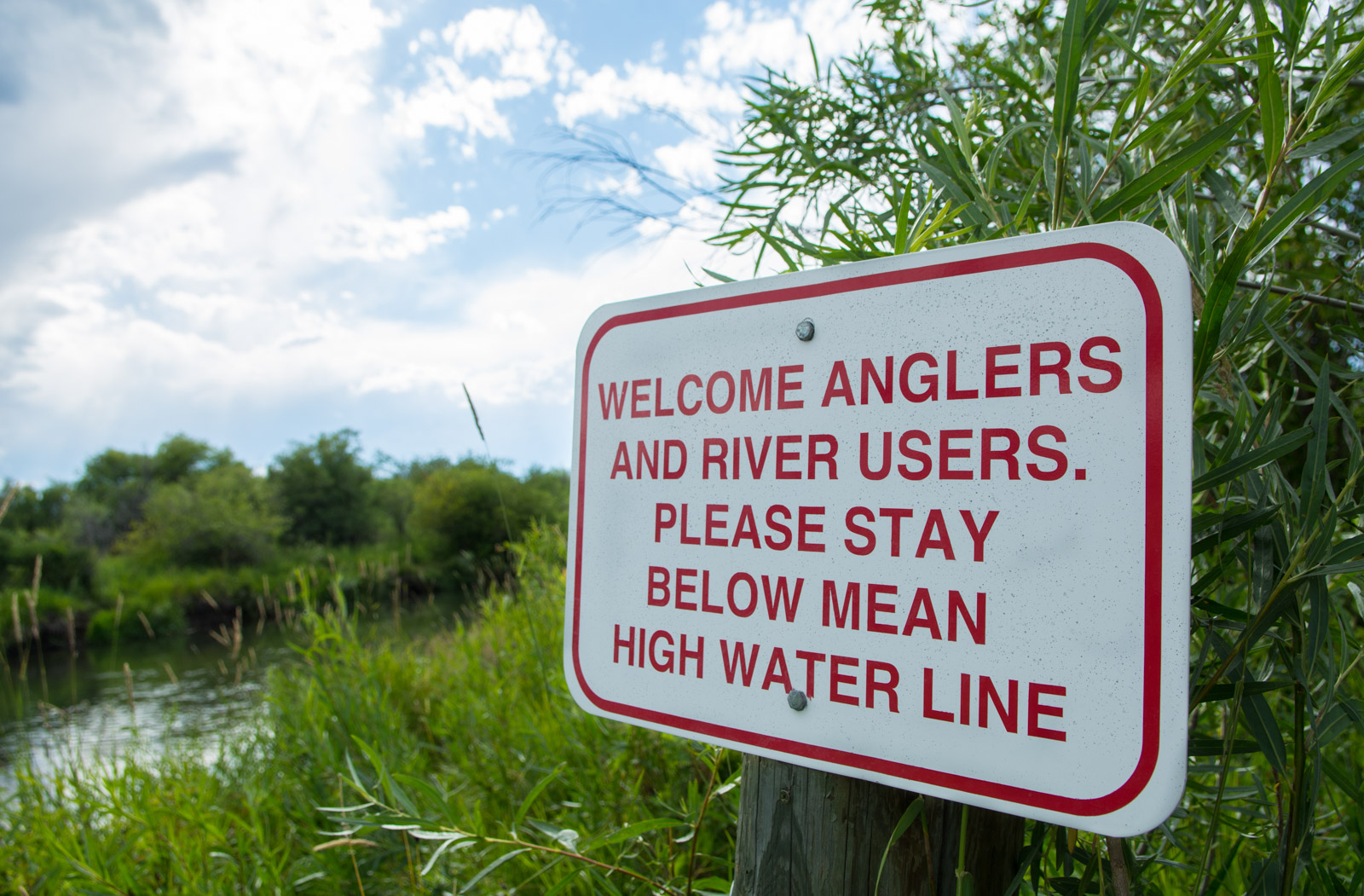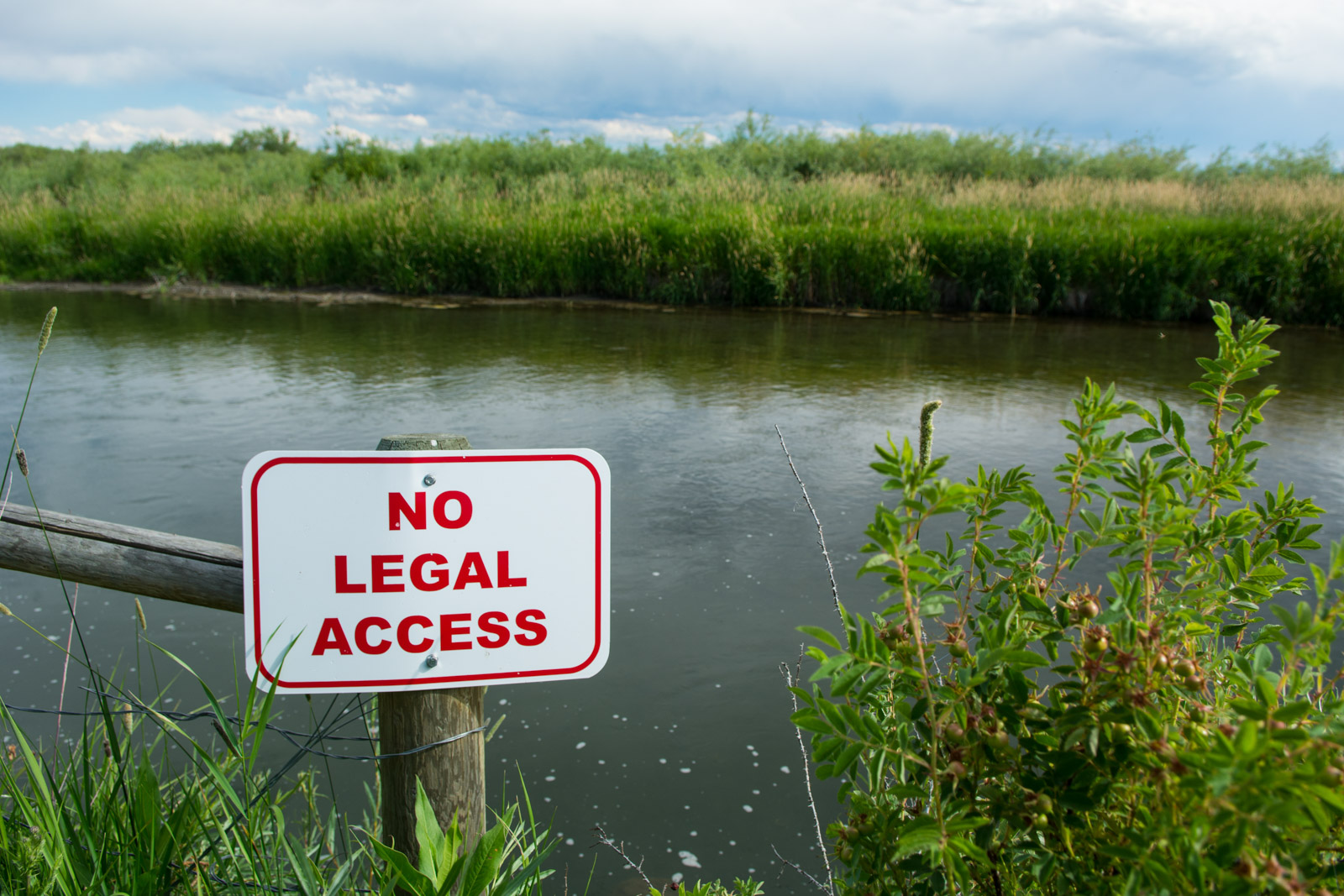Protecting Access for All

by Ryan Koch
On a clear, sunny day, my friend and I parked our vehicle on a public road near a small Montana river. We rigged our rods, walked to the bridge, hopped over the guardrail, and walked directly into the water underneath the bridge. We knew it was our legal right to do so, as long as we remained below the high-water mark; but we also knew that local landowners in the area had been trying to change laws to restrict angler access to the area.
There’s no shortage of examples. Montana’s stream-access law, which allows great public accessibility to rivers and creeks, has been aggressively challenged multiple times over the past few decades. In other cases, public roads are illegally gated off by private landowners, or fences are erected across easements and rights-of-way, blocking access to public land and water. Subversive issues arise in the state legislature, aiming to quietly degrade or outright eliminate access rights.
Since 1985, the Public Land & Water Access Association (PLWA) has fought to keep public waters and lands in Montana open and available to the public. Their mission is “to maintain, restore, and perpetuate public access to the boundaries of all Montana’s public lands and waters.”
PLWA has fantastic resources to help protect Montanans and their ability to enjoy and recreate in the state’s natural landscapes. These include systems to help the public report access issues, outreach to keep the public informed about access laws, a dedicated Public Access Investigator on staff, and resources to pursue justice through legal means as needed.
“You don’t have to have a huge ranch for yourself to enjoy access to land and water,” says PLWA’s director, Drew Haynes. “Montana is one of the states where that is true, and that is not true everywhere.”

Restoring Public Access: A Case Study
In the early 2000s, the Ruby River drainage in southwest Montana became a hotspot for access battles. James Cox Kennedy, one of the wealthiest men in the country, took action in 2004 to stop the public from accessing the Ruby River. He owned properties that bordered public roads and bridges over the Ruby, specifically at Duncan Road, Lewis Lane, and Seyler Lane. Barriers were erected next to these bridges that included wire and electric fencing. Once PLWA brought a lawsuit against the Madison County commissioners, for failing to order Kennedy to remove the obstructions, it started over a decade of legal wrangling that carried repercussions into the present regarding stream access throughout the state.
While the Lewis Lane and Duncan Road access issues were resolved within five years, the Seyler Lane case was quickly muddied by the fact that the Seyler Lane bridge was a “prescriptive easement”—a private road or trail used unencumbered by the public for long enough to remain open to the public, indefinitely. The case quickly became intertwined with statewide access laws and threatened two in particular: the Bridge Access Law (2009) and Montana’s Stream Access Law (1985).
Kennedy’s lawyers argued that his private land should continue all the way to the streambed and beyond. “My client not only owns the land under the Ruby River in Montana. He owns the water in the river and the air above it. So, no member of the public has the right to be on the river running through Mr. Kennedy’s property without his permission,” they argued. It was (and still is) clear that wealthy out-of-staters had no issue with privatizing Montana’s public lands and waters, and this particular individual had the legal means for a protracted fight. If PLWA did not win the court battle, the resulting ruling would have taken away at least one access point, as well as one entire form of stream access in Montana.
Ultimately, justice prevailed and, in a PLWA update from January of 2014, the headline read: “Resounding Victory in Montana Supreme Court – David vs. Goliath.” The ruling in favor of PLWA and public access was a powerful precedent in Montana and remains a celebrated ruling by many citizens of the state. Anglers, as well as many other members of the public who recreate on Montana’s waters, still have access to their rivers at all bridge crossings—on both public roads and prescriptive easements.
In the past, complaints regarding water or land-access issues would often end up unnoticed, unresolved, or forgotten. Hoping to end this trend, PLWA released the Access Issue Reporting System (AIRS) in January of 2023.
Here’s how it works: first off, PLWA can provide jurisdictional guidance for the complaint, whether it be Montana Fish, Wildlife & Parks (FWP), the Montana Department of Natural Resources & Conservation (DNRC), the US Forest Service, the Bureau of Land Management, the local sheriff, or the district attorney. After that, if the issue has been reported and needs additional support, the complainant can file directly with PLWA in their AIRS system. The AIRS database tracks enforcement by agency and region, and helps both the complainant and PLWA follow through to ensure that the issue is addressed, and hopefully resolved.
PLWA encourages local fly shops, outfitters, and other sporting-goods retailers to get involved in promoting AIRS. PLWA is also developing an AIRS mobile app, tentatively launching in late 2023, to further streamline and expedite the reporting of access issues.

In order to keep public lands and waters available for everyone to enjoy, PLWA needs the help of the sporting public. Montana’s citizens need to stay vigilant to access threats, and when concerns arise, people need to report them. By reporting issues to appropriate public officials or to PLWA, a private citizen can help keep public lands in public hands.
“We educate the public to exercise their legal rights; when those rights come under threat, you have to have a group who understands the threat and can act very quickly,” says Haynes. That group is PLWA, and if you’re a Montanan who treasures the angling opportunities within the state—or, for that matter, does anything outdoors, on public water or public land—consider supporting PLWA through donations or by volunteering.
To read more about some of the PLWA’s projects and success stories, or to get involved, visit plwa.org.
